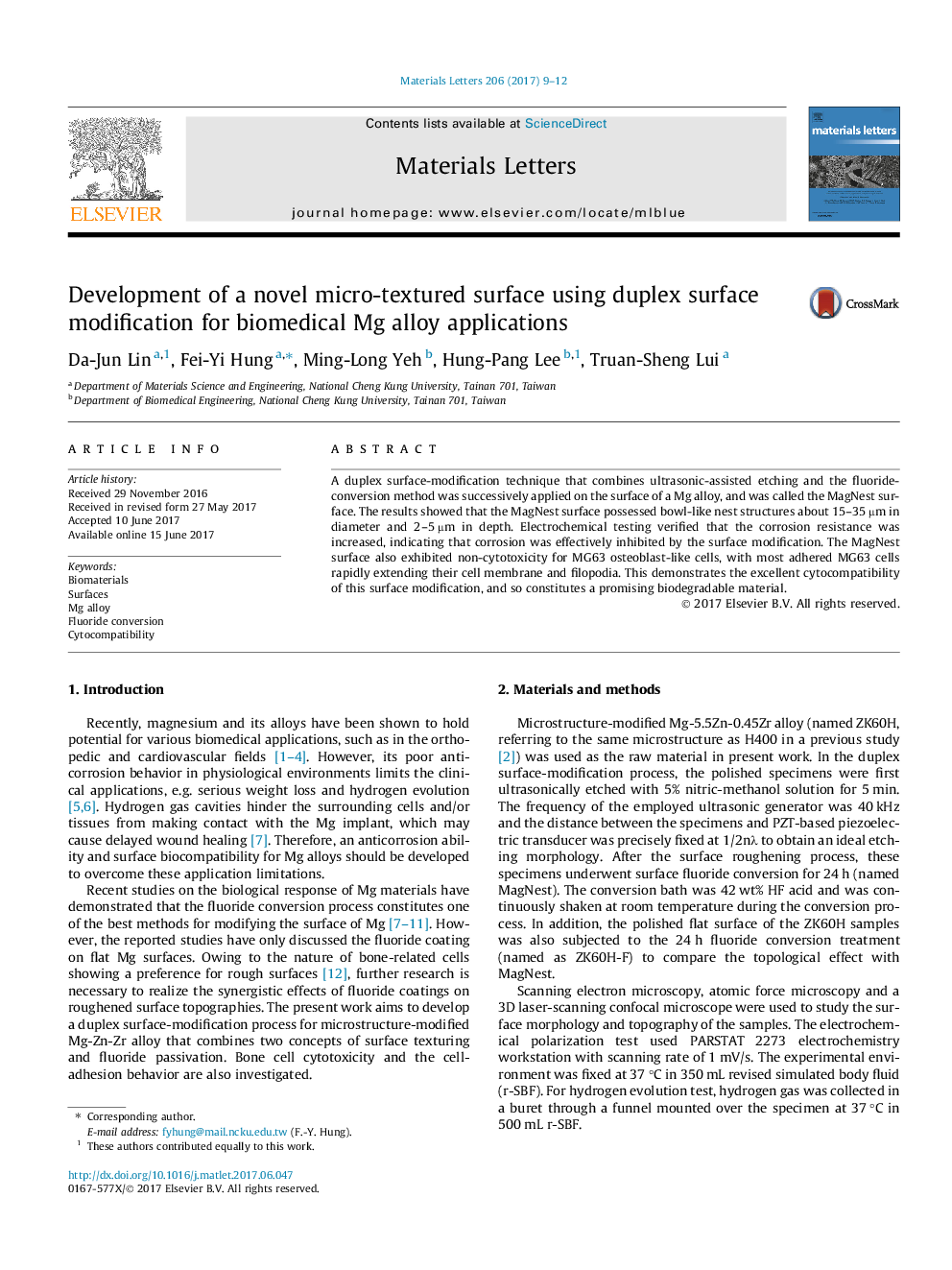| Article ID | Journal | Published Year | Pages | File Type |
|---|---|---|---|---|
| 5463411 | Materials Letters | 2017 | 4 Pages |
Abstract
A duplex surface-modification technique that combines ultrasonic-assisted etching and the fluoride-conversion method was successively applied on the surface of a Mg alloy, and was called the MagNest surface. The results showed that the MagNest surface possessed bowl-like nest structures about 15-35 µm in diameter and 2-5 µm in depth. Electrochemical testing verified that the corrosion resistance was increased, indicating that corrosion was effectively inhibited by the surface modification. The MagNest surface also exhibited non-cytotoxicity for MG63 osteoblast-like cells, with most adhered MG63 cells rapidly extending their cell membrane and filopodia. This demonstrates the excellent cytocompatibility of this surface modification, and so constitutes a promising biodegradable material.
Related Topics
Physical Sciences and Engineering
Materials Science
Nanotechnology
Authors
Da-Jun Lin, Fei-Yi Hung, Ming-Long Yeh, Hung-Pang Lee, Truan-Sheng Lui,
